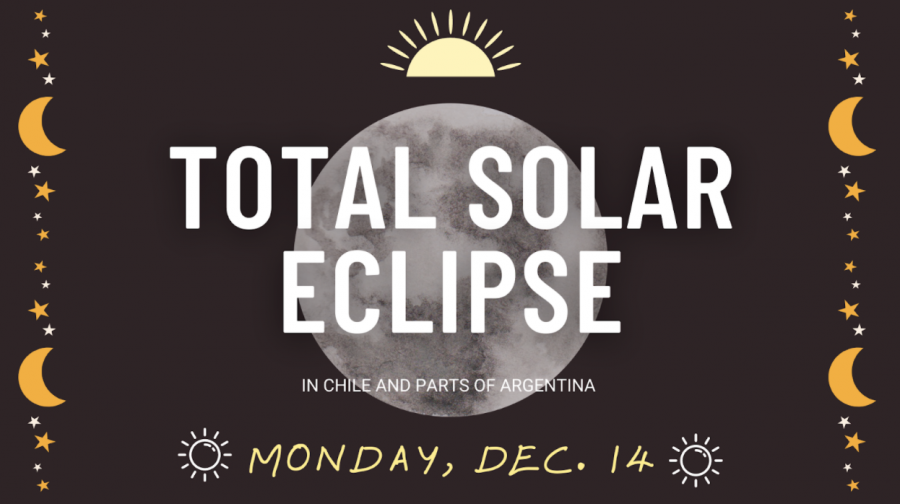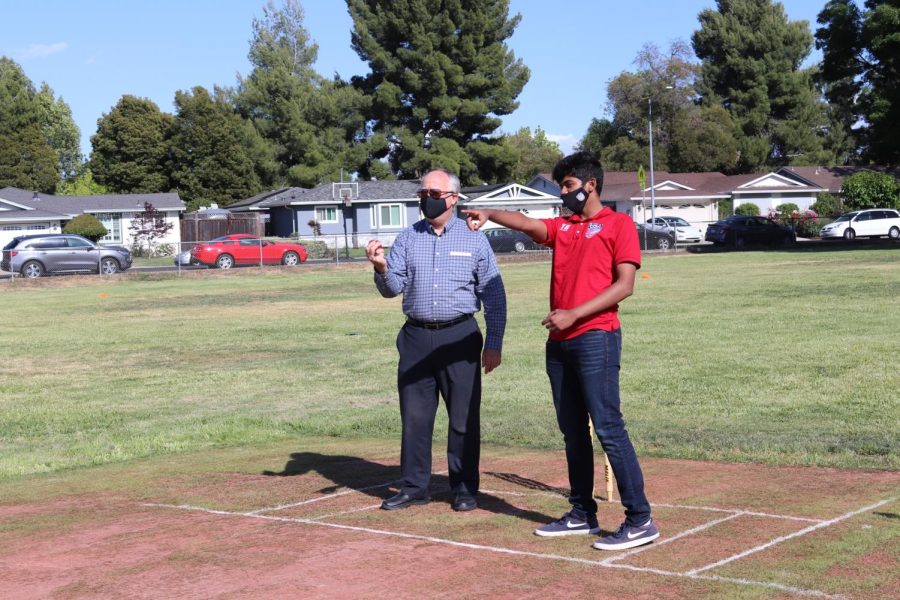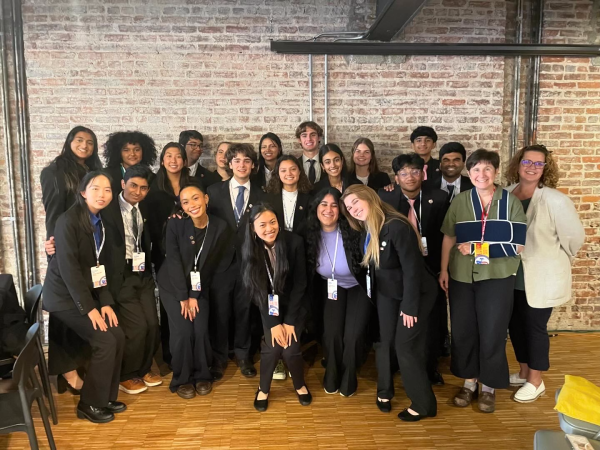Solar Eclipse in South America
December 11, 2020
On December 14th, Chile and parts of Argentina will expect to see a total solar eclipse. Further, southern South America, south-west Africa, and Antarctica may see a partial solar eclipse, if the weather permits.
Full totality will appear for just more than two minutes while the full process will span for 3⅓ hours. It will start at sunrise over the Pacific Ocean and end at sunset over the Atlantic Ocean, near the coast of Africa.
A total solar eclipse is a spectacular sight, as the Moon covers the entire disk of the Sun. This differs from partial and annular solar eclipses, where only parts of the Sun will be blocked by the Moon.
Full totality only exists along a narrow path on the Earth’s surface shown by the Moon’s shadow; only a few will catch sight of the short-lasting full totality of the total solar eclipse.
“I don’t think I’ve ever seen a solar eclipse in my life… If I ever do get to see one I think it’d be pretty cool,” said chemistry teacher Mr. Sakogawa.
The media named the last total solar eclipse, seen on August 21st, 2017, the “Great American Eclipse.” Everyone in North America, parts of South America, Africa, and Europe caught glimpses of at least a partial solar eclipse.
The 2017 eclipse marked history, since there hadn’t been a solar eclipse visible across the entire US since June 8th, 1918. Technological advancements, not previously available, easily enhanced the experience of witnessing the total solar eclipse.
Researchers expect the next “Great American Eclipse” to be on April 8th, 2024, with a totality estimated to last a maximum of four minutes and 28 seconds; the next one after that is due on August 12th, 2045.
This upcoming eclipse will mark the decade’s last total solar eclipse, near end of an incredibly chaotic year too.















